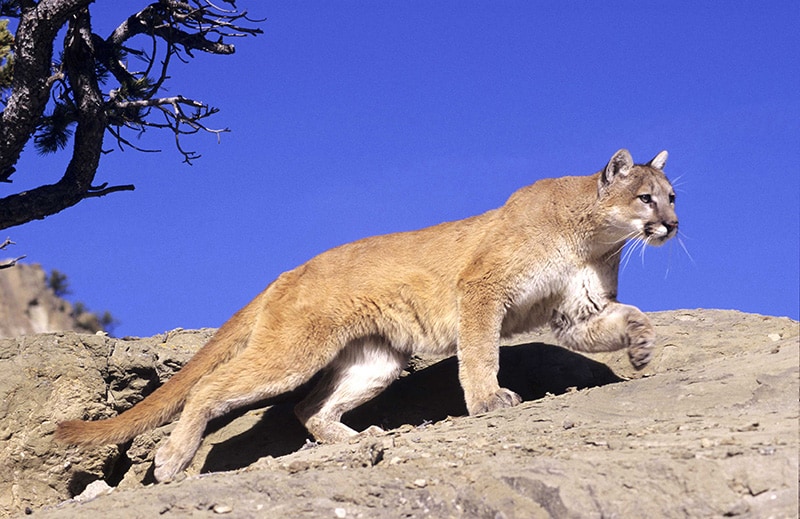One of the quintessential sounds a cat makes is the purr. Purring is a deep throated vocalization created by activating the muscles of the larynx and the diaphragm.
Purring happens both upon inhale and exhale. Other sounds that a cat makes like meowing, hissing, trilling, or chirruping only happen on exhale.
Purring is more than just a vibrating sounds, a cat’s purr is a way of communicating.
Why Do Cats Purr?
Contrary to popular believe, cats purr for a multitude of reasons, not just to show happiness. The main reasons why cats purr are:
- Cats purr when happy
- Cats purr to self-comfort when they are scared or hurt.
- Cats purr to heal
- Cats purr to demand food – not all purring is the same. The urgent purr is a sounds cats make towards their owners to ask for food.
- Kittens purr to bond with their mothers
Purring in Kittens
Kittens are born blind, deaf, and mostly immobile. The mother’s purring helps the kitten to locate her and to start nursing.
Kittens learn to purr a few days after birth and will purr and knead when nursing. A kitten’s purr also helps the mother locate her offspring.
Cats Purr to Show Happiness
When cats reach adulthood, they will continue to purr. Purring, as many people know it, can be a sign of happiness.

Cats will purr when they are being pet or groomed. Cats will purr when in close contact with another cat or even when playing.
Cats Purr to Demand Food
Cats will also purr to tell their humans that they need food. If you’ve ever been woken up by a hungry, purring cat, you will have probably experienced this type of purr. This type of urgent purring is known as a “solicitation purr” or an “urgent purr”.
Researchers found that the “urgent purr” that a cat produces when they are trying to get food from a human emits a high pitch sound embedded in the purr that is similar in pitch to a cry or meow.
These urgent purrs (or solicitation purrs) produce a sound that is less pleasant than the purr of a contented cat.
Cats Purr to Self Comfort
When a cat is in distress or in pain, the cat may purr. The act of purring is believed to help comfort the cat. Purring is self-soothing and can help the cat to relax their breathing and to feel calmer.
Females cats will purr while in labor which is believed to be a form of self-relaxation to manage the pain.
Cats Purr to Heal
Researchers believe that the frequency at which cats purr helps to heal broken bones and muscles. Cats purr at a low frequency and the vibrations that purr causes helps the cat to lesson pain and to heal wounds.
Researchers measured the frequencies at which the domestic cat and certain breeds of wild cats purr (von Muggenthaler, 2001). The study found that felines including domestic cats, servals, ocelots, and pumas purr at frequencies that promote bone growth/fracture healing. The harmonic of these cats also was a levels therapeutic for pain, edema, wounds, and dyspnea.
Video: 4 Reasons Why Cats Purr
Purring in Wild Cats
Some species of wild cats can purr.
When it comes to wild cats, they can either roar or they can purr. The cat family, Felidae, is divided into the “purring cats” (Felinae) and “roaring cats” (Pantherinae).
Therefore, large cats roar but can’t purr. These include the lion, tiger, leopard and jaguar. The one exception to the subfamily Pantherinae is the snow leopard which purrs and can’t roar.
Along with the domestic cat in the subfamily Felinae, wild cats like the cheetah, ocelot, margay, serval, and lynx can purr. Cougars (also known as the mountain lion) are the largest species of cat that can purr.

Read next: Why Do Adult Cats Meow Only to People?
References
McComb, K., Taylor, A. M., Wilson, C., & Charlton, B. D. (2009). The cry embedded within the purr. Current Biology, 19(13), R507-R508. https://doi.org/10.1016/j.cub.2009.05.033
Remmers, J. E., & Gautier, H. (1972). Neural and mechanical mechanisms of feline purring. Respiration physiology, 16(3), 351-361. https://doi.org/10.1016/0034-5687(72)90064-3
von Muggenthaler, E. (2001). The felid purr: A healing mechanism?. The Journal of the Acoustical Society of America, 110(5), 2666-2666. https://doi.org/10.1121/1.4777098







